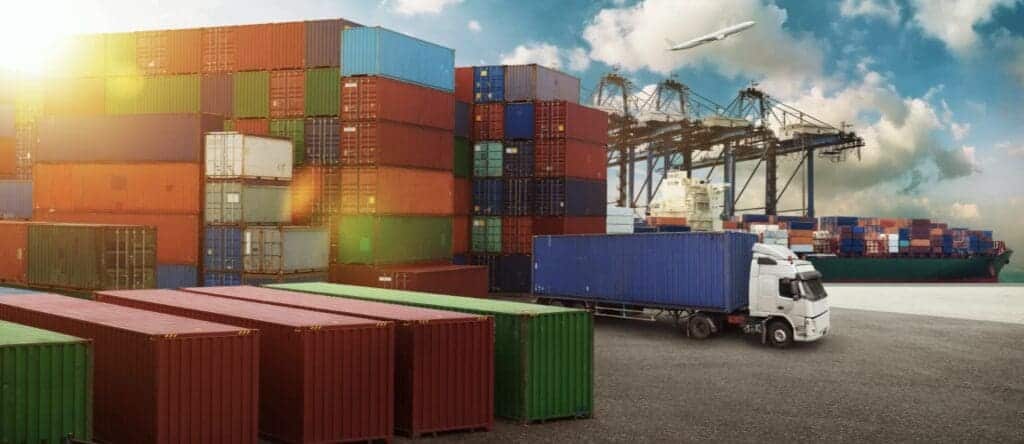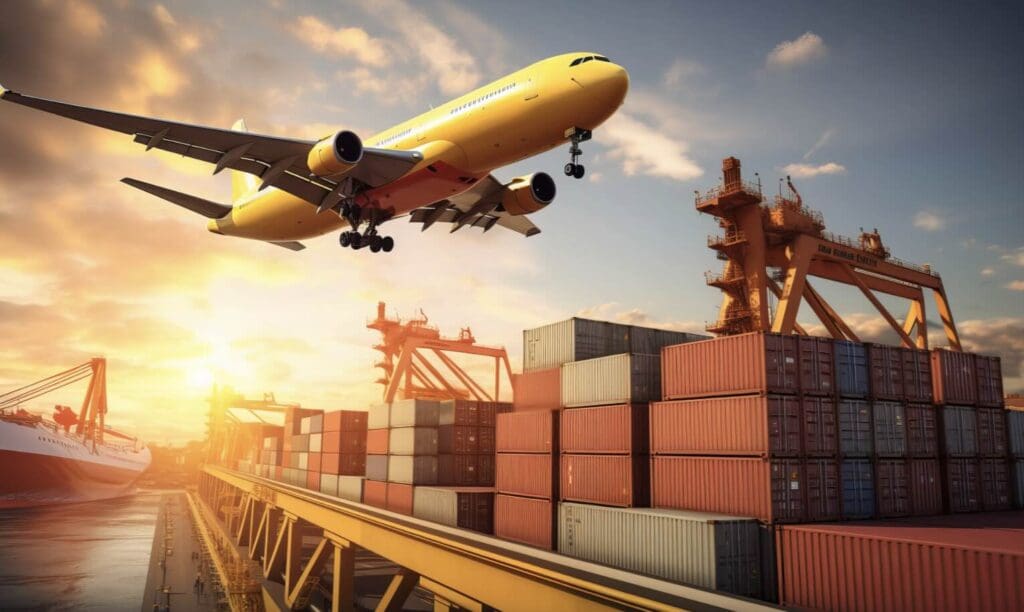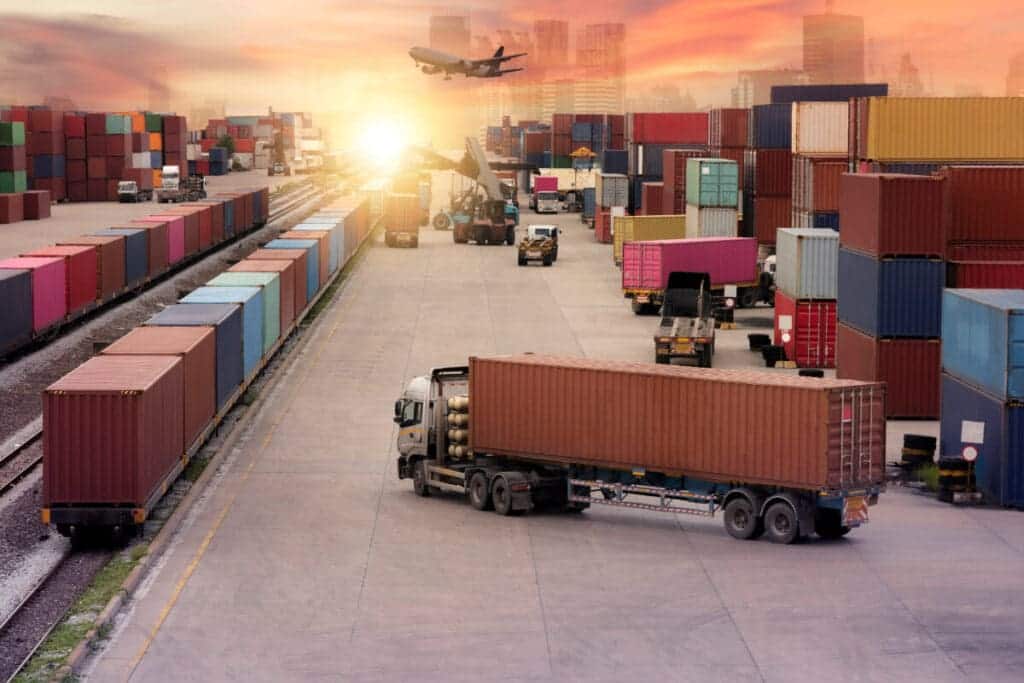Have you ever wondered how your favorite sneakers or the latest smartphone get to you from another country? It’s all thanks to the global supply chain, a super cool network that connects different parts of the world like pieces in a massive puzzle. Picture it: trucks, boats, and planes working together to move stuff around the globe! But it’s not just about getting from point A to B.
We’ve got to think about different country rules, the weather, and even new tech that helps track your package every step of the way. Keeping our planet green is also super important because we want to ensure we’re not hurting the environment while delivering all these goodies. So, let’s dive into this incredible journey and see what makes the global supply chain tick!
Table of Contents
- Understanding Global Supply Chain Dynamics
- Here’s the Deal with Economics
- Technology & Innovation in Supply Chain
- Supply Chain Risk Management
- Diversification: A Smart Play for Supply Chain Stability
- Contractual Nimbleness: Locking It Down Without Locking In
- Safety Stock: Your Backup Plan
- Multimodal Transportation: Keeping It Moving
- Supplier Relationships: Keep It Friendly
- Strategic Stock Locations: In the Right Place at the Right Time
- Quality Control: Don’t Skimp on the Checks
- Sustainable Practices in Supply Chain Management
- Building and Maintaining Supplier Relationships
- Logistics and Distribution Optimization
- Related Content
Understanding Global Supply Chain Dynamics
Global Dynamics and Their Impact on Supply Chain Efficacy
In today’s interconnected world, supply chains are like a vast machine’s intricate cogs and wheels, winding through nations and markets. But what keeps these cogs turning efficiently? Global dynamics play a huge part, and understanding them is critical to grasping the complexities of supply chain management.
Let’s explore the world of global dynamics, where factors like politics, economics, and even Mother Nature influence how things run.
Political Power Plays
Politics and policies can either grease the wheels or throw a wrench. Take tariffs, for example. If Country A slaps extra charges on goods from Country B, it could slow the flow of materials, adding costs and creating delays. Companies often have to shuffle their operations around, looking for new suppliers that won’t break the bank.
But tariffs are not the only factors that lead to uncertainty. Political instability or changes in government can also cause uncertainty. Companies crave stability because it makes planning easier. When rules change on the fly or regimes switch up, it’s like trying to hit a moving target. The supply chain has to be robust and flexible to keep up with these political pivots.
Here’s the Deal with Economics
Money makes the world go round, right? The state of global economies can feel like a roller coaster, affecting everything from the cost of raw materials to consumer demand. When economies are booming, consumers have more cash to splash, increasing the need for goods. Suppliers need to scale their operations to meet this demand.
Conversely, when a recession hits or currency values plummet, it can send shockwaves through the supply chain. Companies might hold back on inventory, wary of overspending. It’s a delicate balance, and keeping an eye on economic indicators helps businesses stay one step ahead.
Technology to the Rescue!
Tech advancements can seriously improve supply chain efficiency. Consider tracking systems. GPS and RFID technologies allow us to follow a product’s real-time journey from the factory floor to the front door. This kind of visibility is a game-changer, helping to pinpoint delays and speed up shipping.
Then there’s automation: robots and AI in warehouses sorting, picking, and packing—it’s like something out of a sci-fi movie, but it’s happening right now! It cuts down on errors and saves tons of time, so goods move faster.
Let’s Talk About the Planet
Environmental factors are a massive piece of the puzzle. Natural disasters—think hurricanes, earthquakes, or even pandemics—can disrupt supply chains in a heartbeat. Ports close, flights ground, and roads become impassable, all leading to major hold-ups.
Sustainability is also on everyone’s mind. Consumers and governments are pushing to make supply chains greener. That means reworking processes to reduce carbon footprints and finding eco-friendly materials. It’s a big challenge but essential for our planet’s health.
In the Loop with Loops
Also, don’t forget the supply chain loops—the back-and-forth between suppliers, producers, and customers. It’s like a dance; when one partner steps out of sync, it can throw off the whole routine. Global dynamics can cause these loops to tangle or run smoothly, affecting how quickly products reach the market.
The Wild Card Called Culture
You’ve got to factor in culture too! It influences consumer trends and preferences. If a product’s hot in one country, it might be a total flop in another. Companies need to know their audience and anticipate these cultural currents. After all, what’s the point of shipping a bunch of goods if no one’s interested in buying them?
So, what’s the bottom line? Global dynamics are supply chain efficacy’s unsung heroes (and sometimes villains). Whether it’s the political climate, economic health, tech trends, Mother Nature’s mood, or the cultural vibe—each plays its part in the big picture. For businesses navigating these waters, keeping a weather eye on these global winds is crucial for smooth sailing and success.

Technology & Innovation in Supply Chain
In the ever-evolving landscape of global commerce, the role of a supply chain manager has expanded to encompass a deep understanding of technology. Tech know-how is no longer nice; it’s an essential part of the skill set for modern supply chain managers. Let’s dive into why this expertise has become so critical.
First, technology is at the heart of operational efficiency. Supply chain managers with a handle on the latest tech can streamline processes like never before. Take inventory management, for example—no more endless spreadsheets and manual counts. With RFID tags and IoT devices, managers can instantly track products in real-time, cutting down on loss and surplus.
But it’s not just about what’s in the warehouse. Let’s talk logistics. Are they moving goods from point A to point B? That’s a complex dance between carriers, weather, and tight timelines. Modern systems use advanced algorithms to optimize routes and schedules. This tech-savvy approach can save big bucks on fuel and time, especially in the crunch of last-mile delivery logistics.
And when it dawns on you—the customer! Supply chain managers need to keep pace with shifting consumer trends. This is where big data and analytics come into play. Armed with data, managers can predict what customers want before they do, creating a proactive, not reactive, supply chain. From targeted marketing campaigns to anticipating the need for product restocking, technology enables supply chain managers to stay a step ahead.
Have you heard of blockchain? It’s not just for cryptocurrencies. Blockchain tech offers a transparent, secure way to document transactions in the supply chain world. This isn’t just handy; it’s revolutionary. Every stakeholder can view a product’s journey from factory to shelf, building trust and eliminating inefficiencies.
When talking about factories, let’s touch on production—where the magic happens. Advanced automation, AI, and robotics are changing the manufacturing game. Tech-savvy supply chain managers who embrace these tools can boost output while maintaining quality standards. And let’s be real—who doesn’t want to avoid the headache of recalls?
Then there’s communication. Email, instant messaging, and collaboration platforms keep everyone on the same page—from suppliers to the sales team. In a world where delays cost dollars, effective communication tech keeps projects on track, minimizing misunderstandings that could throw a wrench in the works.
Lastly, risk management. With technology, supply chain managers can monitor potential risks like a hawk. From early warnings of supplier bankruptcies to predictive analytics for disruptive weather patterns, these tools help navigate choppy waters before they capsize the ship.
So, why is tech know-how crucial for modern supply chain managers? To put it simply—it’s the lifeblood of a nimble, resilient, and ahead-of-the-curve operation. These managers don’t just survive; they thrive in the complex, interconnected world of supply chain management because they’ve got their fingers on the pulse of technology. And that, folks, is the secret sauce for success.

Supply Chain Risk Management
Diversification: A Smart Play for Supply Chain Stability
Ah, the global supply chain—like a giant puzzle where each piece is crucial. You know the drill: one hiccup, a domino effect caused by delays and dollar signs. So let’s cut to the chase and talk strategy for keeping those goods a-movin’ and the cash a-flowin’.
First, don’t put all your eggs in one basket—or, in this case, suppliers from one region. Diversification is key. Spread out your sources like a master chef spreads icing on a cake. Find suppliers in different geographical locations to sidestep potential regional disruptions like a pro.
Contractual Nimbleness: Locking It Down Without Locking In
Next up, contracts. These need to be as flexible as your yoga-enthusiast friend. Long-term agreements? Sure, they can save you a few bucks, but flexibility is worth its weight in gold when the unexpected hits. Build clauses into contracts that allow for adapting order sizes or postponement without taking a financial bath.
Safety Stock: Your Backup Plan
Imagine you’re preparing for a camping trip—pack extra matches, water, and snacks, right? Apply this to your inventory. Having a just-right amount of safety stock (not too little, not too much) can be the buffer you need when supplies get shaky.
Multimodal Transportation: Keeping It Moving
Then there’s multimodal transportation: planes, trains, automobiles, and ships. Mixing it up means you’re not left stranded if one mode encounters troubled waters (skies, roads… you get the idea).
Supplier Relationships: Keep It Friendly
Alright, and let’s talk about relationships—not the rom-com type, but with your suppliers. Good relationships can mean the difference between getting your batch of gizmos on time or being at the end of the line. Touch base, network, and ensure you’re not just a number on their client list but a favorite call.
Strategic Stock Locations: In the Right Place at the Right Time
Location, location, location—it’s not just for realtors. Place your stock strategically close to key markets. If your product is just a short drive away from your most significant market, you’ll quickly cut down on lead times and transportation costs.
Quality Control: Don’t Skimp on the Checks
Do quality control on the lock? You better. Ensuring product quality at every step means fewer returns and happier customers. Implement robust checks so your cargo doesn’t bounce back like a bad cheque.
Finally, let’s not forget continuous improvement—always keep your eyes peeled for the latest trends and tweaks in supply chain management. Stay agile, stay informed, and stay ahead of the game.
Now you’ve got the goods—shake up that supply chain confidently and keep those side hustles thriving. Who knows, with these strategies up your sleeve, you might just find your supply chain is smoother than your favorite jazz riff.

Sustainable Practices in Supply Chain Management
Integrating sustainability into the supply chain is not just a feel-good thing; it’s an innovative business. Nowadays, consumers don’t just look at price tags; they are keen on how products are made and if they’re earth-friendly. So, companies are stepping up their game, transforming their supply chains to be greener and cleaner.
Picture this: a supply chain humming with little waste, products made from recycled materials, and everything being moved around using energy-efficient transport. That’s the dream. Well, that’s the sustainable supply chain! It’s like hitting two birds with one stone – saving the planet while also saving some cash. Let’s break it down.
First, let’s talk about materials. Companies are turning to recycled or biodegradable stuff instead of using brand-new, often resource-heavy materials. It’s not just about using them but also designing products that can be easily recycled at the end of their life. So, it’s like they’re born again, over and over—pretty cool, huh?
Energy use can’t be ignored either. Companies are all about renewable energy, putting solar panels on warehouses, or tapping into wind power. They’re like Mother Nature’s BFFs, cutting down on fossil fuels and slashing carbon footprints.
Transport is a biggie. It’s not just about choosing ships over planes; it’s also about optimizing routes to make fewer trips. And companies aren’t stopping there. They’re looking into electric trucks, hybrid vehicles, and even bikes for city deliveries. It’s like a race to zero emissions; every company wants that gold medal.
Remember water—it’s a precious resource. So, water management in the supply chain comes in. Companies are using less of it, recycling it, and making sure it’s as clean as when they found it when they’re done. Who wants to be the guy who wasted water, right?
Now, let’s talk about the big guns: tech and data. Companies are crunching the numbers to see where they can cut back on waste, improve efficiency, and reduce their environmental footprint. They’ve got sensors, apps, and all sorts of gadgets to keep everything on the green side.
But here’s the thing—it’s not just about nature. It’s also about the people. Ethical labor practices are part of a sustainable supply chain. Fair wages and safe working conditions are the good stuff right there. It’s about making sure everyone along the chain is taken care of.
And let’s never forget local sourcing. Snagging supplies from nearby reduces transport emissions and supports the local economy when possible. It’s like helping your neighbor and the planet at the same time.
Lastly, companies are ditching the “throwaway” culture. They’re thinking long-term, creating longer-lasting products, and encouraging repairs instead of replacements. They’re getting creative, ensuring things can be taken apart and renewed.
Integrating sustainability isn’t just a passing trend; it’s the new norm for supply chains. Companies that get it right win customer loyalty, save on costs, and help our only home, planet Earth. They’re not just shipping stuff around—they’re changing the world, one product at a time. And that’s a wrap on how sustainability is not just a side note; it’s front and center in the successful supply chain management symphony.

Building and Maintaining Supplier Relationships
Supply chain relationships are not just a nice-to-have; they are a critical component of any successful business. Think of it like a finely-tuned engine in a race car—if even one part isn’t in sync, the whole machine can sputter and fail at the worst possible moment.
Fostering solid supplier relationships isn’t just about avoiding disaster; it’s about creating value for both parties. It’s like a dance where everyone has to be in tune with the music. When the connection is strong, suppliers are more likely to go the extra mile, offering speedier turnaround times or volume discounts, which can be a game changer for meeting customer demands and boosting your bottom line.
So, what’s the secret sauce for optimizing these relationships? For starters, communication is key. Yeah, that sounds cliché, but clear, open dialogue is gold in the world of supply chains. It helps to align goals, anticipate changes, and coordinate strategies. With transparent communication, you can catch potential snags before they become full-blown issues, and suppliers can keep you looped in on the latest innovations or shifts in market dynamics.
Here’s a hot tip: prioritize face-to-face meetings or video calls over endless email threads. A personal touch goes a long way in building trust and mutual respect, which is the bedrock for collaboration and negotiation when needed most.
Now, let’s talk tech. Leveraging the latest digital tools can streamline processes and drastically reduce miscommunication. Picture a digital platform where you can instantly update order details, track delivery progress, and manage invoices. That sounds pretty sweet, right? Investing in these technologies can strengthen ties and open up new possibilities for cost savings and efficiency.
Another strategy to keep in your back pocket is aligning values and corporate social responsibility goals. Companies are increasingly judged not just on their products but also on their ethical stance and sustainability efforts. By working with suppliers with similar values, you can confidently tell a story that resonates with today’s conscious consumer. Plus, it can seriously amplify your brand’s reputation.
But it’s not just about the feel-good stuff. Optimizing supplier relationships also means getting strategic about contracts. This is where understanding and respecting the supplier’s needs comes into play. Sure, you want the best deal for your company, yet pushing too hard could lead to strained relations. So, consider win-win scenarios where both sides benefit—shared risks, tiered pricing, or bonuses for hitting performance targets.
So, you’re likely wondering, “Can supplier relationships make or break my business?” The answer is a resounding yes. It’s like a domino effect: One good relationship leads to smoother operations, which then leads to satisfied customers, which, in turn, contributes to a growing and profitable business.
Remember, behind every product on the shelf or service offered, there is an intricate web of relationships that makes it possible. Nurturing these relationships can be the difference between a thriving business and one struggling to keep up. By focusing on open communication, embracing technology, aligning values, and strategic partnering, you can set the stage for a supply chain that’s efficient and resilient in the face of an ever-changing market landscape.

Logistics and Distribution Optimization
Let’s focus on a critical aspect of logistics and distribution that keeps the whole machine humming along with training and workforce development. A knowledgeable and skilled team can distinguish between a well-oiled logistics operation and a tangled mess of inefficiency.
Imagine this: An employee who knows exactly what to do, when, and how to zigzag around common roadblocks. That’s the power of investing in training. It’s all about equipping staff with the need-to-knows of inventory management, the latest software tools, and more. Plus, when folks understand their roles inside and out, they’re quicker, make fewer errors, and are generally happier.
Another power move? Cross-training. This is where workers are trained to perform multiple jobs within the operation. Not only does this boost flexibility in staffing—it’s like having a Swiss Army knife in your pocket—but it also means employees can jump in where they’re needed most, especially when you hit those peak periods or if someone on the team hits the beach for vacay.
Now, technology’s great, but let’s not forget the good ol’ human touch. Teamwork and collaboration are the glue that holds everything together. With the right communication tools—think instant messaging, project management software, or even the classic whiteboard—teams can stay connected, solve problems on the fly, and avoid mishaps before they happen.
Let’s come back to safety. In logistics, taking shortcuts can lead to a heap of trouble. That’s why consistent safety training matters—it keeps everyone in the know about how to work safely and avoid injuries. Because, let’s face it, a team sidelined with sprains and strains is as stuck as a truck in the mud.
Don’t overlook the importance of fostering a culture of continuous improvement, either. Encouraging employees to bring new ideas to the table and actively seeking out those “there’s got to be a better way” moments can lead to game-changing innovations in efficiency.
So, there you have it—the lowdown on boosting efficiency in logistics and distribution. Stay sharp on training, keep those communication lines wide open, and always look for that next big improvement. Your logistics operation will thank you for it—with fewer hiccups and a healthier bottom line.

Now you have the lowdown on what makes the global supply chain unique. It’s like a mega-highway connecting the whole world and has some serious skills to handle many challenges. We’ve seen how tech like robots and computer brains (AI) can make things move faster and safer.
Plus, we know it’s key to work well with all the people who help make and send stuff because being friends with them can make a difference. And let’s not forget about doing good for our planet — we’ve got to keep things green and clean. Remember, the next time you hold something from across the ocean, there’s a huge, smart, and super-cool network working 24/7 to make that happen. Isn’t that just awesome?
If you are interested in seeing how Mondoro can help you with your supply chain – we would love to talk to you about how we can help you and be part of your global supply chain.
Find out more about how Mondoro can help you create, develop, and manufacture excellent home decor and home furniture products – don’t hesitate to contact me, Anita. Check out my email by clicking here or become a part of our community and join our newsletter by clicking here.
Mondoro gives out a FREE Lookbook to anyone interested. You can receive a copy of our latest Lookbook by clicking here.
Listen to our Podcast called Global Trade Gal. You can find it on all major podcast platforms. Try out to listen to one of our podcasts by clicking here.
Subscribe to our Mondoro Company Limited YouTube Channel with great videos and information by clicking here.
Related Content
AI And The Supply Chain, 15 Ways Explored
AI or Artificial Intelligence will change the global supply chain in many ways. Everything from refining forecasting capabilities to helping select suppliers to automatization of the entire global supply chain workflow. Read on as we explore how AI will help revolutionize the global supply chain.
You can learn more by reading AI And The Supply Chain, 15 Ways Explored by clicking here.
Aligning Your Supply Chain With Your Business Strategies
The Supply chain and the business strategies are some of the most important strategies a business can have. A business should look to align both its supply chain and business strategy. To do, there are several steps that they can take to ensure this happens. Read on as we explore the steps a company can take to align its supply chain and business strategies.
By clicking here, you can learn more by reading our blog, Aligning Your Supply Chain With Your Business Strategies.
Analysis Of Three Key Flows In Supply Chain Management
The three critical flows in supply chain management are material or product, information flow, and financial flow. All of these flows in the supply chain are essential, and they help to ensure the smooth running and operation of the supply chain.
You can learn more by reading our blog, Analysis Of Three Key Flows In Supply Chain Management by clicking here.

